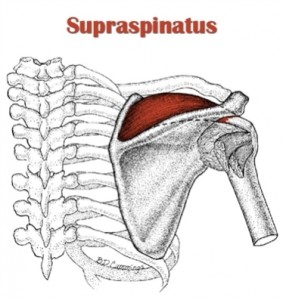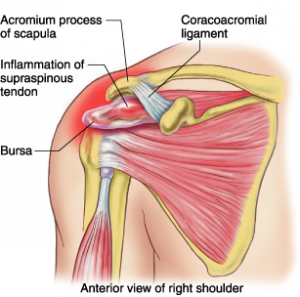Throughout schooling to become a registered massage therapist, we had to conduct a case study. With this case study, we had to find a patient with a condition or injury that could potentially be treated with the use of massage therapy techniques. Over a period of time, and a minimum of 5 massage treatments, we tracked our progress with the patient using different forms of measurement; joint range of motion and pain scale being the most commonly used.
I chose to treat a friend of mine, an elite volleyball player, who had significant pain and decreased range of motion in her dominant shoulder due to extreme overuse. Through a series of special tests, I chose to treat supraspinatus tendinitis. Now that’s a mouthful! The supraspinatus muscle runs from the upper portion of the shoulder blade, inserting into the shoulder and aids in lifting your arm away from your side. Tendinitis is inflammation of a tendon, often caused from repetitive strain.
Using specific massage techniques, there were noticeable improvements made with each treatment. To summarize what was a 22 page case study, a patient who has a healthy shoulder joint should have little to no problem in accomplishing 90 degrees of internal rotation and 180 degrees of abduction upon active range of motion. In this patient’s case, initial assessment charted her internal rotation only achieving 28 degrees and abduction could not go further than 105 degrees. The pain that accompanied these motions and thus inhibiting any additional range, was charted at a 7 out of 10 on the pain scale. By the end of our 5 treatment sessions, this client had achieved 80 degrees of internal rotation, over 160 degrees of abduction, and went from a 7 on the pain scale, to a 1. The progress made over just 5 sessions was incredible!
As an RMT, it is so rewarding to track the progress made with our patients from session to session. Some issues take longer to see results than others. But it is our primary goal to help you and make your life more comfortable as you go about your daily activities. Whether you have a nagging injury, are experiencing unusual discomfort, or just need to de-stress, get in to see your RMT – we will do what we can to help!
Alicia Willems, RMT
Pictures:
pyshio-pedia.com
kingofthegym.com


